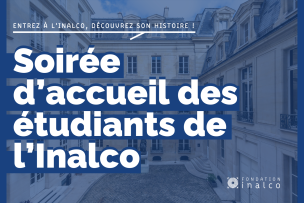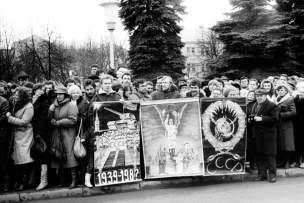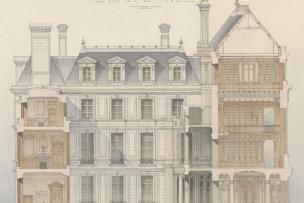The difficult task of creating a secretary for the École des langues orientales
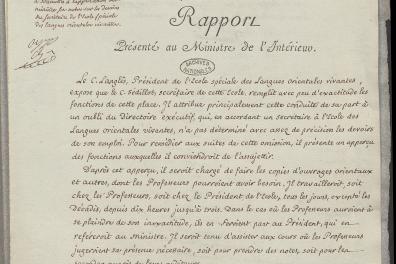
In 1798, the administrator, Louis-Mathieu Langlès asked the Ministry of Public Instruction to appoint a secretary to assist him in his duties. His choice fell on Jean Jacques Emmanuel Sédillot, who was part of the first graduating class of the École polytechnique and studied Arabic, Turkish and Persian¹ at the Langues Orientales.
Unfortunately, after two years the results were mixed. Indeed, Langlès observes that "c[itoyen] Sédillot, secretary of this school, fulfills with little exactitude the functions of this position²". He then specifies the duties and responsibilities of the secretary: his first mission is to copy works to gradually build up a collection for the School; he must also assist the administrator and take notes during classes, if requested by the teachers.
.
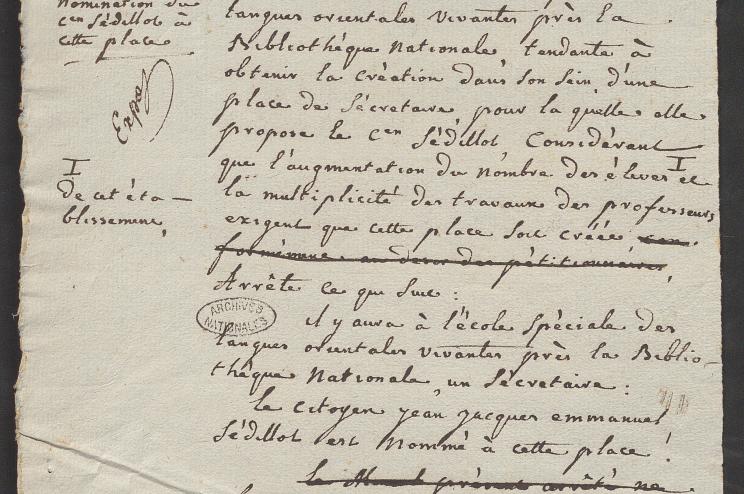
At the time, the Oriental Languages library didn't exist, and someone was needed to manage the works that were gradually joining the École's collections. This link between the secretary and the library would last for a long time, until the appointment on November 1er, 1923 of a head librarian: Mme Colette Meuvret³. From this point onwards, the role of secretary general would increasingly focus on managing administrative and financial services and ensuring the proper application of acts relating to the management of the establishment⁴.
References
¹ Ministère de l'intérieur, projet d'arrêté, 1798, F/17/1143, Archives nationales de Pierrefitte.
² Jean-Baptiste Dumouchel, Rapport présenté au ministre de l'intérieur au 27 nivôse an 9, January 17, 1801, F/17/1143, Archives nationales de Pierrefitte.
³ Cent cinquantenaire de l'École des langues orientales, Histoire organisation et enseignement de l'École Nationale des langues orientales vivantes, Paris, Imprimerie nationale de France, 1948.
⁴ Arrêté de la présidence de l'Inalco dated April 2, 2002, Inalco fonds.
